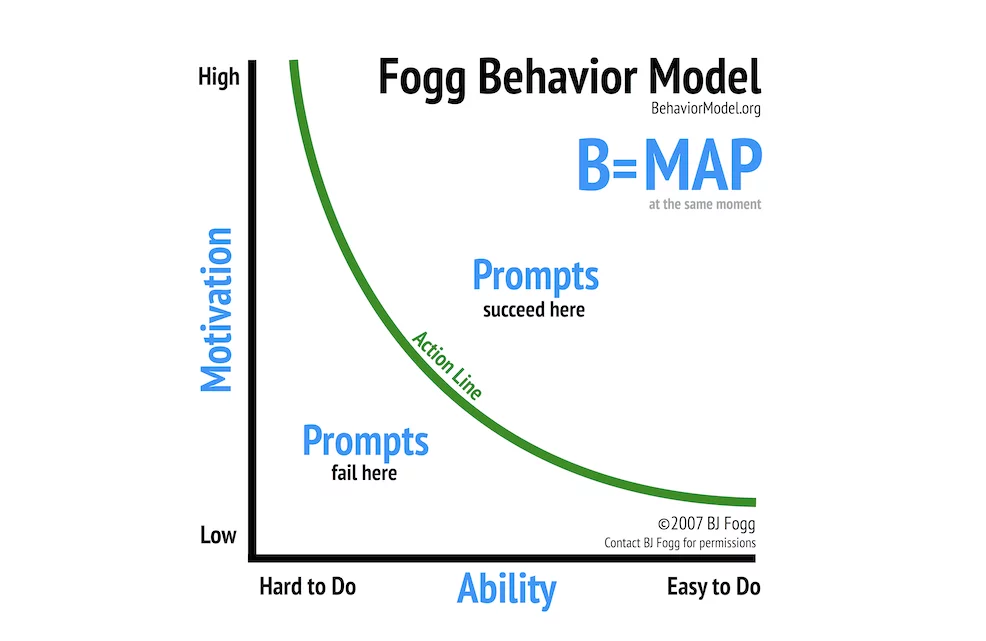The Fogg Behavior Model
I recently came across a brilliant model for human behavior that impacts how I think about user experience.
BJ Fogg postulated that behavior in a given moment can be summarized by a simple formula:
B = mat
Or,
Behavior = Motivation Ability Trigger
The idea is that a person needs to be motivated, able, and reminded of an action, if we are to expect them to take that action. If the motivation and ability is strong enough when the trigger occurs, the person will act. Makes sense, right?
Right, but he doesn’t stop there. He actually plots out each of these factors, and how they influence each other and affect the final decision. Here’s a chart:

That looks complicated.
So, let’s break it down with an example. Suppose McDonalds wants you to buy a hamburger, (which, by the way, they do). In this case, “motivation” represents aspects like how hungry you are and how you feel about buying McDonalds. Ability represents factors like the travel distance to the McDonalds, how much money you have, and whether it’s open. The trigger is the sight of the Golden Arches, or the smell of french fries.
The “Action line” on the chart is curved the way it is because people don’t need to be fully motivated and fully able in order to take an action. Strong motivation can overcome weak ability, and strong ability can overcome weak motivation. For example, if you love and crave McDonalds, you might be willing to drive a long ways to get it (strong motivation, weak ability). On the other hand, if you dislike McDonalds, you might just get it anyways if you’re standing right in front of one with money in your pocket (weak motivation, strong ability).
Why should I care?
What do you want your users to do? Subscribe to your emailing list? Upgrade their plan? Refer a friend? That’s the behavior. If you want to encourage that behavior, then think about how you can increase their motivation and ability, so they’ll act when the trigger occurs. Maybe your users need a killer feature just out of reach to motivate them to upgrade their plan. Or maybe you need to reduce friction to make it easier for people to subscribe. And if your current technique isn’t increasing ability, motivation, or triggers to act, then maybe it’s time to adopt another technique.
This rough overview is just scratching the surface. To learn more about the Fogg Behavior model, check out behaviormodel.org